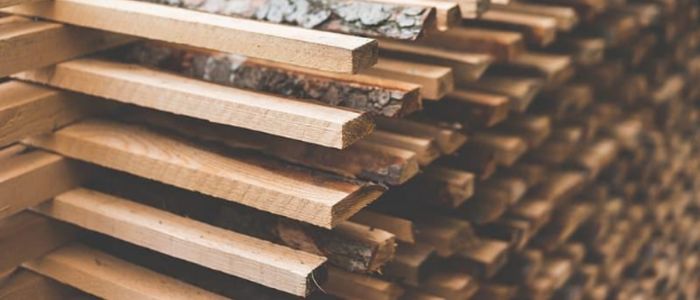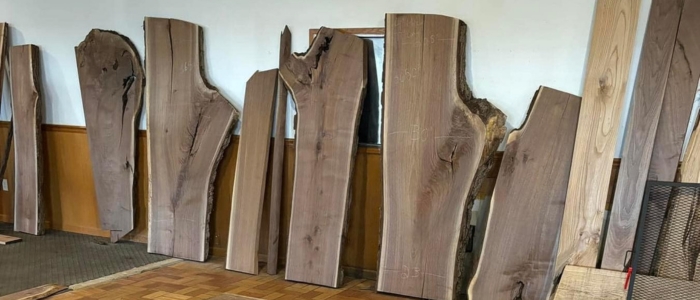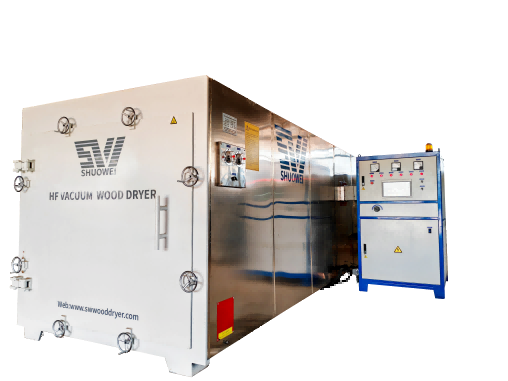You’ve probably heard of pressure-treated lumber. It’s a process where the wood is impregnated with chemicals to help reduce decay, resist insects and fungi, and retain moisture better throughout the years. These chemical treatments also last for many years before needing a repeat application.
Pressure-treated wood has become popular for decking and landscaping in recent years because it is cheap, durable, and fairly easy to install. But you might be wondering about another question: Is kiln-dried lumber pressure-treated?
This article takes a closer look at what pressure-treated lumber is made from and whether it poses a threat to public health.

Is Kiln Dried Lumber Pressure Treated
Kiln drying is a process of drying lumber at higher temperatures for a while, compared to traditional air drying. This process helps reduce moisture content in the wood and makes it more resistant to decay and rot. If you are looking for a durable, long-lasting material for your deck or outdoor structures, then kiln-dried lumber is worth considering.
However, it’s important to note that not all types of pressure-treated lumber are created equal. Builders and do-it-yourselfers alike like Kiln Dried pressure-treated lumber. It is measured, cut, nailed, stained, and sealed. It is also easier to work with than other types of pressure-treated lumber.
But despite its many benefits, some potential health and safety concerns may arise from using this type of wood. For example, the chemical agents used in pressure-treated wood can sometimes be toxic or carcinogenic if you breathe them in. Additionally, some people may experience skin irritation or allergic reactions to the chemicals.
Because of these potential risks, it is important to take necessary precautions when working with pressure-treated wood. Always wear safety equipment such as gloves and goggles to minimize contact with the chemicals and follow manufacturer guidelines for safe handling.
Does kiln dried mean treated?
Kiln drying eliminates extra moisture and chemicals left behind after pressure-treating lumber with chemicals, which helps reduce the natural inclinations of wood to warp, cup, and shrink. Kiln dried after treatment lumber (KDAT) is a process after pressure treated wood.
Therefore, the term “kiln dried” does not mean that this lumber is treated. However, some types of pressure-treated wood may still contain chemicals and toxins, posing health and safety risks when working with this material. To minimize these risks, it is essential to take proper precautions when using pressure-treated wood and follow all manufacturer guidelines.

How do you know if pressure treated wood is kiln-dried?
The best way to know if pressure treated wood is kiln-dried is to check the product label and manufacturer guidelines. Kiln drying is a process that typically occurs after pressure-treating, so you should look for terms like “KDAT” or “kiln dried after treatment” on the product label.
Additionally, some manufacturers will include specific information about the kiln drying process, such as how long it lasts and what temperature is typically used. There is an additional test you may perform to see if your wood is dry if the previous one didn’t show any moisture. A few drops of water from a cup should be placed on the wood’s surface. The wood is sufficiently dry for painting if the water seeps into it.
If it beads up, you might need to let it sit for a longer time. It is also vital to ensure that the wood has been treated with chemical preservatives since some may not require additional treatment. Pressure-treated lumber is a popular and durable material for decking and landscaping due to its affordability, strength, and resistance to rot and decay.
However, it is important to consider the potential health and safety concerns associated with this material, such as exposure to harmful chemicals or allergic reactions. To minimize these risks, it is essential to take proper precautions when using pressure-treated wood and follow all manufacturer guidelines.
Frequently Asked Questions
What is pressure-treated lumber and how is it made?
Pressure-treated lumber is wood soaked in chemical solutions to help protect it against decay, warping, and other damage caused by moisture and insects. The pressure-treating process starts by soaking the wood in chemicals using a large vat or pressurized cylinder. The wood is then pressure-treated at high temperatures to help the chemical treatments penetrate deep into the wood fibers.
Why is pressure-treated lumber so popular for decking and landscaping?
One of the main reasons that pressure-treated lumber is so popular for decking and landscaping is its affordability. In addition, this material is stronger and more durable than many other types of wood, making it ideal for use in outdoor applications. Pressure-treated lumber resists rot and decay caused by moisture and is also generally resistant to insects and other pests.
What are the potential health risks associated with pressure-treated lumber?
One of the main concerns with pressure-treated lumber is that it often contains high levels of chemicals, such as chromium, copper, and arsenic. These chemicals can be toxic and may pose health risks if absorbed through the skin or inhaled in large quantities. Additionally, some people may be allergic to certain chemicals used in pressure treatment processes.
How can I minimize the health risks associated with pressure-treated lumber?
There are several steps you can take to help minimize the potential health risks associated with pressure-treated wood. First, it is important to follow all manufacturer guidelines when using this material. This includes wearing protective clothing and personal safety equipment such as gloves and goggles when working with pressure-treated wood.
Additionally, you should avoid breathing in sawdust or wood filings that may be produced when working with this material. You may also choose to use alternative materials such as composite decking to further reduce the risks associated with pressure-treated wood.
What are some other uses for pressure-treated lumber?
Several other applications where pressure-treated lumber may be used instead of less durable wood types. This material is commonly used for fence posts and other outdoor building materials. Additionally, pressure-treated lumber is often used in boat docks and other applications where excessive moisture or weather conditions are present.
How do I pick the best type of pressure-treated wood for my application?
Choosing the best type of pressure-treated wood for your application can be a difficult decision. One important consideration is the amount of foot traffic that will be present on your deck or other structures, which may influence the strength and durability required in the lumber. In addition, you should also carefully consider any potential health risks associated with certain chemicals used in the pressure treatment process. Another factor to consider is whether or not you need fire-retardant-treated lumber for any structure such as a deck or patio. It is also important to make sure that the chemical treatments used on your pressure-treated lumber are resistant to decay from moisture and insects.
What should I look for in a quality manufacturer of pressure-treated wood?
There are several key factors you should consider when looking for a quality manufacturer of pressure-treated wood. The most important consideration is the quality of the lumber itself, which should be resistant to both moisture and pests. Additionally, you should look for a manufacturer that follows all safety guidelines when applying chemical treatments to wood and offers environmentally friendly options where possible. A reputable lumber company will also offer various products made with pressure-treated wood, such as fence posts or boat docks.
Conclusion
If you are concerned that your kiln-dried lumber if it is pressure treated, you can check with your contractor or lumber yard. Some types of pressure-treated lumber have been treated with toxic chemicals, so if you are going to use this type of lumber, make sure you get it from a reputable supplier.
Whether your project is for interior or exterior use, keep in mind the potential health risks associated with pressure-treated wood, and follow all manufacturer guidelines when working with this material. With some planning and careful selection of your lumber, you can minimize the risks associated with pressure-treated wood and create a beautiful and safe outdoor living space for you and your family.
Click here for more on kiln-dried lumber info!




